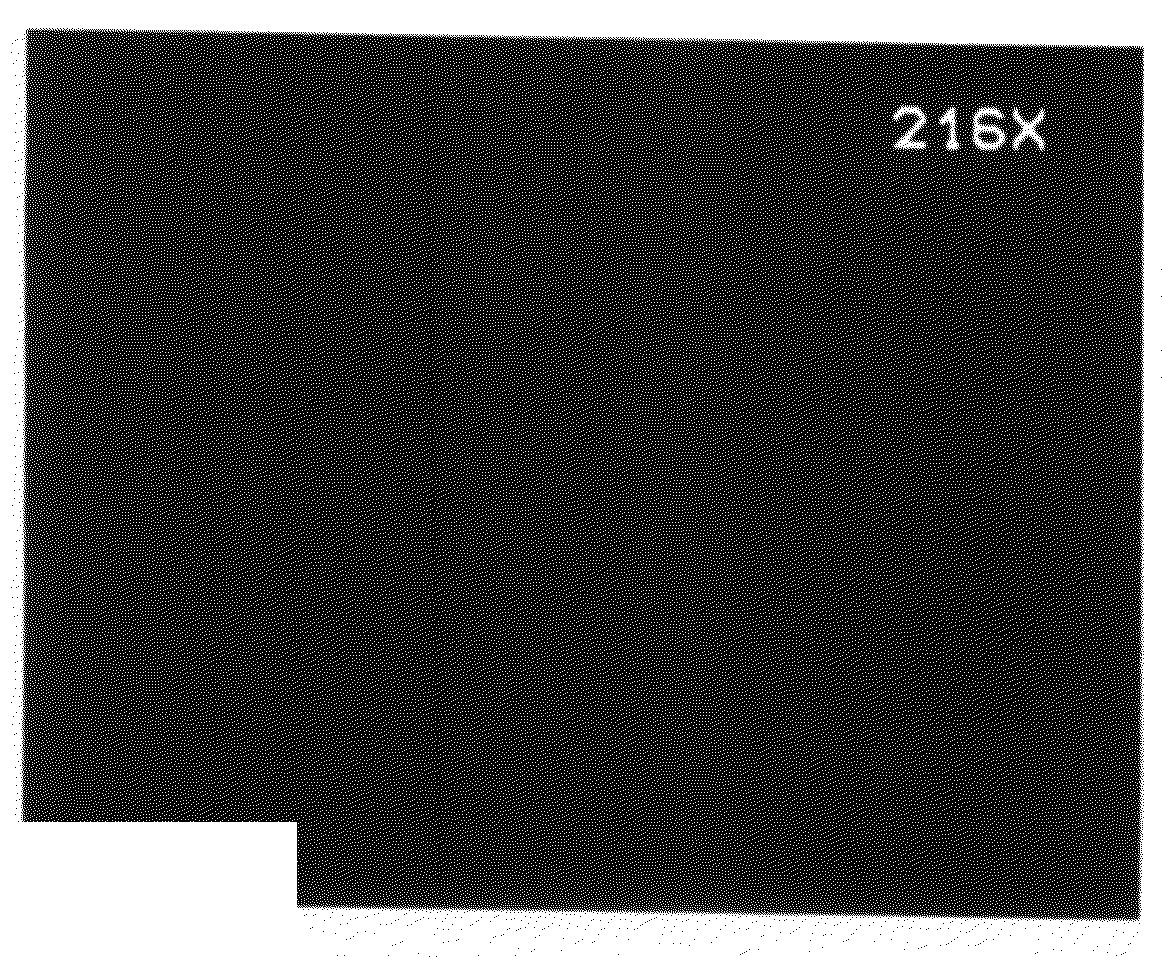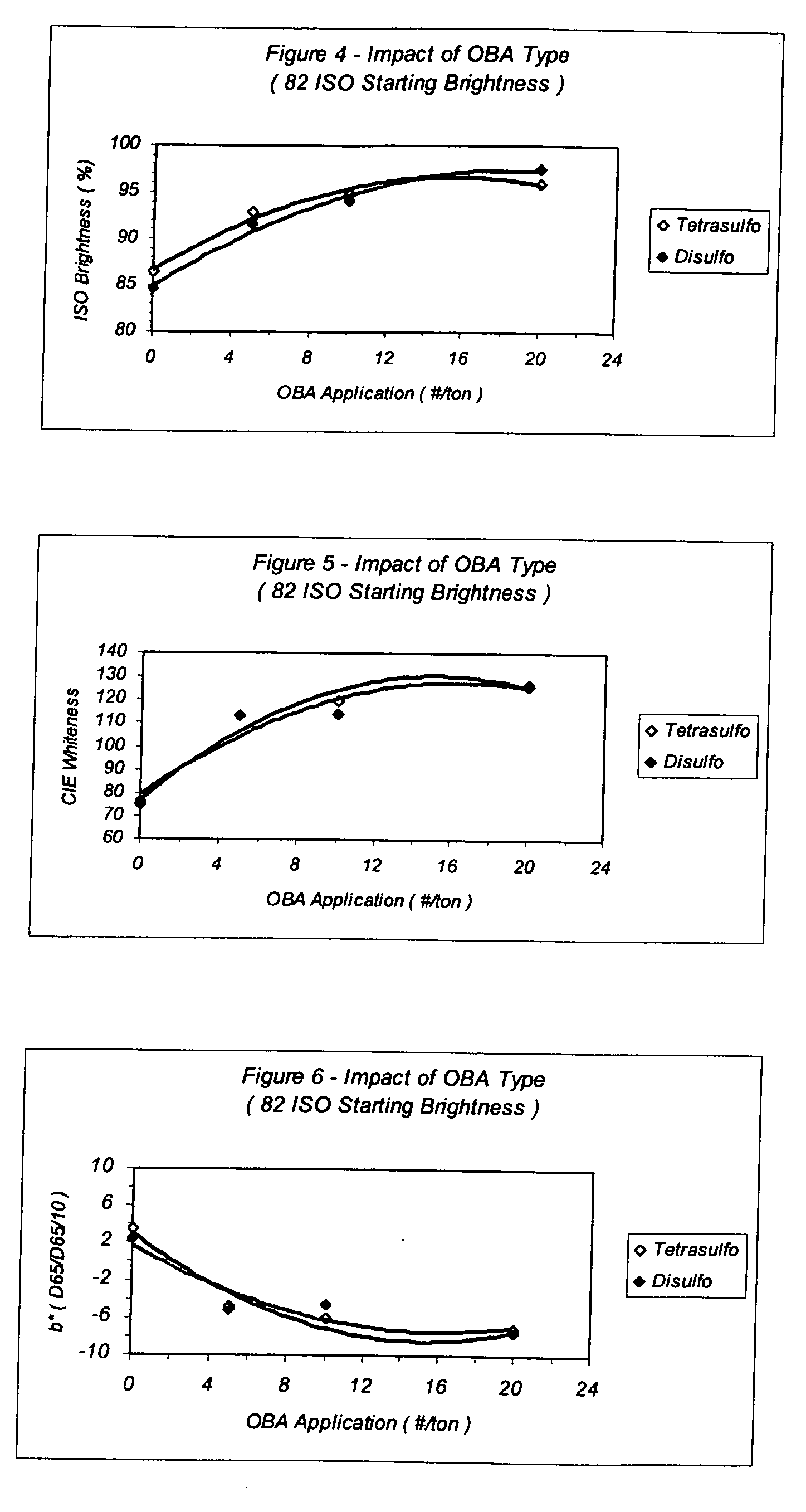Process for manufacturing pulp, paper and paperboard products
a technology of pulp and paperboard, applied in the field of process for manufacturing pulp, paper and paperboard products, can solve the problems of undesirable yellow-white product, bulk and opacity, adverse effects on other properties of mechanical pulp, etc., and achieve the effect of high iso brightness and/or cie whiteness levels
- Summary
- Abstract
- Description
- Claims
- Application Information
AI Technical Summary
Problems solved by technology
Method used
Image
Examples
examples 1e to 3g
AND COMPARATIVE EXAMPLES C60 to C60
[0079]Using the procedure of Examples 1A to 10 D and Comparative Examples C1 to C34, a series of experiments were carried out to Spruce CTMP pulp is treated bleach chemical solutions containing the desired amounts of H2O2, NaOH and optionally OBA, chelating and stabilization chemicals. One purpose of these experiments is to demonstrate the effect of effect of treatment time, duration of the treatment, temperature, consistency and chemical additives (Leucophor AP, H2O2, Na2SiO3, DTPA) on the ISO brightness and the CIE Whiteness of the treated Spruce CTMP pulp.
[0080]The specific process conditions and the results of the evaluation are set forth in the following Table II.
TABLE IISpruce CTMPExampleH2O2NaOHNa2SiO3DTPAConsTimeTempInitialFinalOBAFinalFinalInitialInitialNo.(%)(%)(%)(%)(%)hrs° C.pHpH(# / ton)CIEISOISOCIEC6112.5101028511.39.30−15.656.658.23.5C6222.5101028511.08.609.865.858.2.3.5C6332.5101028510.88.0021.370.158.23.5C6442.5301228010.910.4041.477...
examples 1h to 3h
[0081]Using the procedure of Examples 1A to 10D and Comparative Examples C1 to C34, a series of experiments were carried out to treat Aspen BCTMP pulp with bleach chemical solutions. The bleaching solution contained 6% H2O2, 5% NaOH, 3% Na2SiO3, 0.5% DTPA and 0.5% MgSO4. The bleaching mixture was mixed with pulp at a consistency of 20% and bleach at a temperature of 85° C. for 2 hours at an initial pH of 10.8. The final ISO brightness was 84.4 and the final CIE whiteness was 61.6. After bleaching was completed, then OBA Leucophor AP was added to the mixture of pulp and spent bleaching chemicals and the consistency reduced to 10%. One purpose of these experiments is to demonstrate the effect on the ISO brightness and the CIE Whiteness of the treated Aspen BCTMP pulp when the pulp is treated with OBA in the presence of spent bleaching chemicals.
[0082]The specific process conditions and the results of the evaluation are set forth in the following Table III.
TABLE IIIExampleOBATimeInitia...
example 1i
[0083]A series of experiments were conducted determine the relative to the cross sectional distribution of the optical brightener in the pulp of this invention and pulp treated with OBA using conventional processes. The pulp sample of this invention evaluated was that of Example 6C and one of the conventionally brightened pulps was that of Example C23. The other conventional pulp analyzed was similar to that of Example C23 except that it was treated at a consistency of 1%. In these experiments, a small specimen was cut from each handsheet and embedded in embedding medium. Cross sections were prepared and examined under an optical microscope using UV / Fluorescence illumination. Photomicrographs were taken at 216× and 432× using our Tectronic analog camera to show OBA distribution and intensity. The results are set for the in FIGS. 21 to 24. The photomicrographs of the sample of Example 6C are shown in FIGS. 19 and 22, the photomicrographs of the sample of Example C23 are shown in FIGS...
PUM
 Login to View More
Login to View More Abstract
Description
Claims
Application Information
 Login to View More
Login to View More - R&D
- Intellectual Property
- Life Sciences
- Materials
- Tech Scout
- Unparalleled Data Quality
- Higher Quality Content
- 60% Fewer Hallucinations
Browse by: Latest US Patents, China's latest patents, Technical Efficacy Thesaurus, Application Domain, Technology Topic, Popular Technical Reports.
© 2025 PatSnap. All rights reserved.Legal|Privacy policy|Modern Slavery Act Transparency Statement|Sitemap|About US| Contact US: help@patsnap.com



